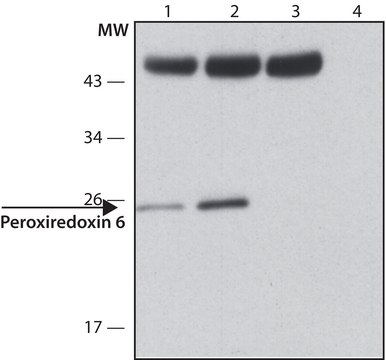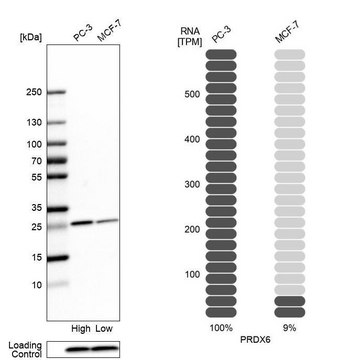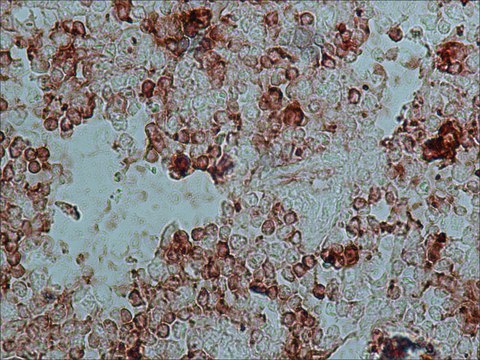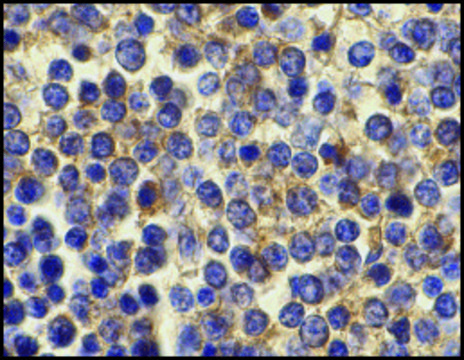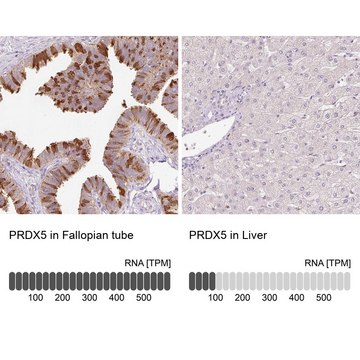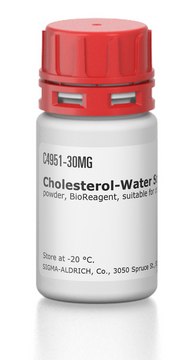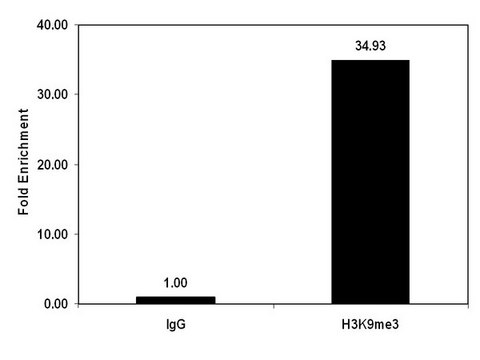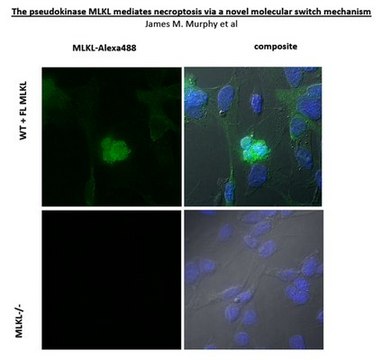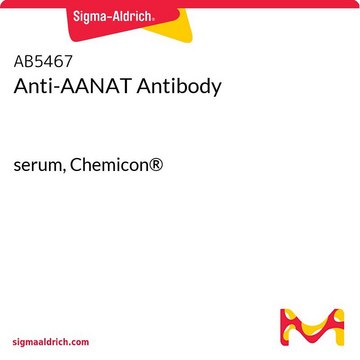MABN1797
Anti-Prdx-6 Antibody, clone TAG-2A12
clone TAG-2A12, from mouse
Synonym(s):
Peroxiredoxin-6, EC: 1.11.1.15, 1-Cys peroxiredoxin, 1-Cys PRX, 24 kDa protein, Acidic calcium-independent phospholipase A2, aiPLA2, Antioxidant protein 2, Liver 2D page spot 40, Non-selenium glutathione peroxidase, NSGPx
About This Item
Recommended Products
biological source
mouse
Quality Level
antibody form
purified immunoglobulin
antibody product type
primary antibodies
clone
TAG-2A12, monoclonal
species reactivity
human
packaging
antibody small pack of 25 μg
technique(s)
flow cytometry: suitable
immunocytochemistry: suitable
immunofluorescence: suitable
immunoprecipitation (IP): suitable
western blot: suitable
isotype
IgG1κ
NCBI accession no.
UniProt accession no.
shipped in
ambient
target post-translational modification
unmodified
Gene Information
human ... PRDX6(9588)
General description
Specificity
Immunogen
Application
Immunocytochemistry Analysis: A representative lot detected Prdx-6 in Immunocytochemistry applications (Ding, V., et al. (2014). MAbs. 6(6):1439-52).
Flow Cytometry Analysis: A representative lot detected Prdx-6 in Flow Cytometry applications (Ding, V., et al. (2014). MAbs. 6(6):1439-52).
Immunofluorescence Analysis: A representative lot detected Prdx-6 in Immunofluorescence applications (Ding, V., et al. (2014). MAbs. 6(6):1439-52).
Western Blotting Analysis: A representative lot detected Prdx-6 in Western Blotting applications (Ding, V., et al. (2014). MAbs. 6(6):1439-52).
Flow Cytometry Analysis: A representative lot detected Prdx-6 in human corneal endothelial cells from a donor. (Courtesy of Dr. Vanessa Ding, Ph.D. and Dr. Andre Choo, Ph.D, BTI, Singapore).
Neuroscience
Quality
Isotyping Analysis: The identity of this monoclonal antibody is confirmed by isotyping test to be human IgG1 .
Target description
Physical form
Storage and Stability
Other Notes
Disclaimer
Not finding the right product?
Try our Product Selector Tool.
Storage Class Code
12 - Non Combustible Liquids
WGK
WGK 1
Flash Point(F)
Not applicable
Flash Point(C)
Not applicable
Certificates of Analysis (COA)
Search for Certificates of Analysis (COA) by entering the products Lot/Batch Number. Lot and Batch Numbers can be found on a product’s label following the words ‘Lot’ or ‘Batch’.
Already Own This Product?
Find documentation for the products that you have recently purchased in the Document Library.
Our team of scientists has experience in all areas of research including Life Science, Material Science, Chemical Synthesis, Chromatography, Analytical and many others.
Contact Technical Service